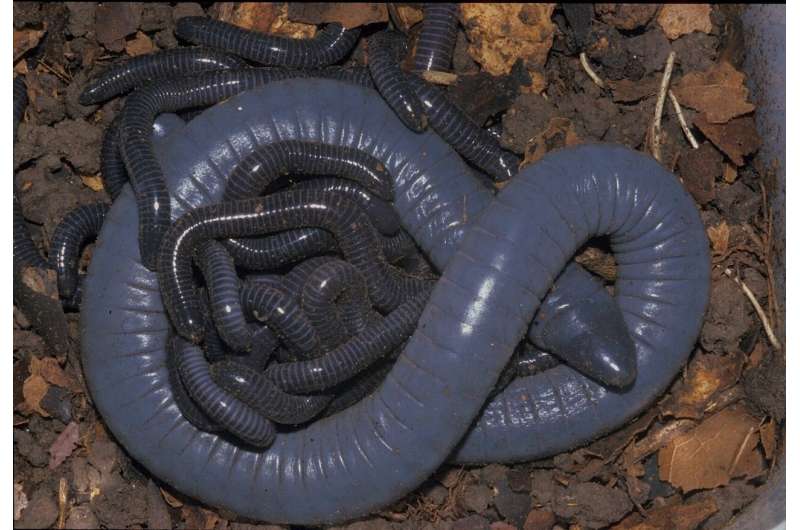This article has been reviewed according to Science X's editorial process and policies. Editors have highlighted the following attributes while ensuring the content's credibility:
fact-checked
peer-reviewed publication
trusted source
proofread
Egg-laying caecilian amphibians produce milk for their young, find scientists

Parental care for offspring occurs in many animals and is an essential part of the reproduction, propagation and development of an organism. An international research team from Brazil, the U.S. and Germany, including Dr. Alexander Kupfer, curator of Amphibians and Reptiles at the State Museum of Natural History Stuttgart, have revealed for the first time how egg-laying female caecilian amphibians successfully raise their offspring in the nest.
Caecilian amphibians are one of the least known vertebrate groups. The researchers were able to observe that the females of egg-laying amphibians, such as the species Siphonops annulatus, provide their young a similarly high-fat milk in the nest as, for example, egg-laying mammals. This discovery demonstrates the complexity of the evolution of reproductive strategies in vertebrates and expands our knowledge of brood care and communication in amphibians.
The research is published in the journal Science.
In most vertebrates, the yolk is usually the only form of nutrition females provide to the growing embryo. The research team observed that the young of the Brazilian caecilian Siphonops annulatus consumed milk for over two months, which appears to be secreted in response to tactile and acoustic stimulation from the mother's cloaca. The milk consists mainly of fats and carbohydrates and is produced in the glands of the female's oviduct.
"Through our investigations in amphibians, we have now discovered a vertebrate system in amphibians that has developed similarly comprehensive brood care mechanisms as known for mammals. This includes the production of fat-rich mother's milk and the release of milk to the young in the nest, known as lactation. This tells us a lot about the evolution and reproductive strategies of this still little-known vertebrate order," says Dr. Alexander Kupfer, zoologist at the State Museum of Natural History Stuttgart.
Caecilian amphibians are legless, snake-like amphibians that are widespread in the tropical regions of the world. All caecilian amphibians provide brood care. The female of the Brazilian amphibian Siphonops annulatus lays eggs and raises its hatchlings in the nest with fat-rich "milk" as well as its skin. Parental brood care is therefore similar to that of egg-laying mammals such as echidnas and platypuses.
More information: Pedro L. Mailho-Fontana et al, Milk provisioning in oviparous caecilian amphibians, Science (2024). DOI: 10.1126/science.adi5379
Marvalee H. Wake, Amphibian hatchlings find mother's milk, Science (2024). DOI: 10.1126/science.ado2094
Journal information: Science
Provided by State Museum of Natural History Stuttgart


















